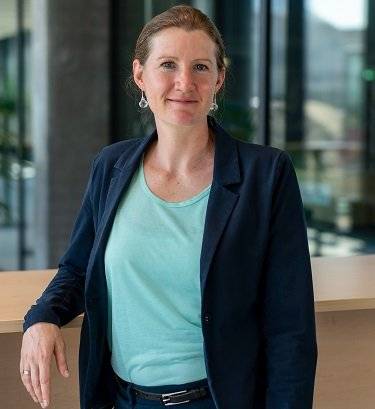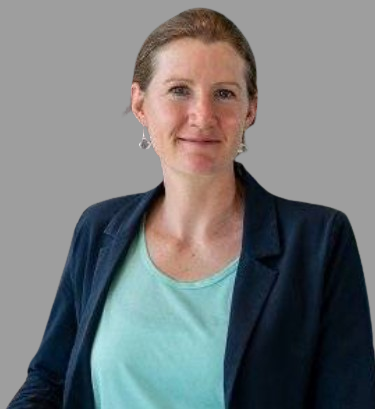Breakthrough in Critical Care
Ronja Müller-Bruhn co-founded STIMIT, a MedTech startup founded to establish a breakthrough in critical care by empowering patients to breathe. The entrepreneur says that STIMIT’s vision is a breakthrough in critical care: From mechanical ventilation to breathing, STIMIT Therapies will empower patients to breathe. Ronja believes in building an impactful business. She speaks on an array of topics in an interview. Excerpts from the interview:
Conception of STIMIT – The Journey
“The core idea was born by observing a strong clinical need. STIMIT’s co-founder Oliver Müller, a professional caregiver in intensive care, experienced the life-threatening complications induced by excessively applied mechanical ventilation,” sais Ronja. She adds that patients can lose their ability to breathe within days when they must undergo conventional mechanical ventilation processes. The possible consequences range from long recovery processes to mechanical ventilator dependencies to death. “Oliver realized that heart stimulation and stimulation of various body parts had been established, but nobody stimulates the diaphragm to keep our “breathing pump” strong.” To address this need, the STIMIT team developed important technological solutions with 15 patents filed to date, and the firm’s first medical device is part of ongoing clinical trials. “We are the first company to focus on keeping the diaphragm active and intact via non-invasive stimulation technology.” “Critical care of the future will allow the patients to breathe instead of just passively being ventilated. Patients are going to recover way faster.” Thus, in 2018 I ended my job as entrepreneurship manager and founded STIMIT.”
The Solution
Different courses of disease may require artificial respiration. The coronavirus is just one of them. If the body is no longer able to breathe on its own to a sufficient extent, mechanical ventilation can save lives. However, after just a few days of ventilation, there is a risk of weakening the respiratory muscles and diaphragm. For patients to be able to breathe on their own again, the diaphragm, as the most important respiratory muscle, must be maintained and built elaborates Ronja. “This is where STIMIT comes in. STIMIT technology aims to achieve keeping the diaphragm intact by stimulating the diaphragm by means of non-invasive technology. The future potentials of diaphragm stimulation technologies go far beyond our current focus application: a breakthrough in critical care is unstoppable where patients are empowered to breathe. The mobilized actively breathing patient is the critical care patient of the future.”
The MedTech Journey
“I discovered the MedTech area as one of the most fascinating areas of all with great potential for innovation at the interface between living body and technology. This is the driving force for innovation” adds Ronja. She urges the organizations to be open minded and think global to identify markets where successful market approval and product launch is likely. “As a MedTech start-up one must more and more be prepared to get strong financial investors on board. I did not mind sharing the company with great minded people – I believe in the “small piece of a big cake” philosophy to boost global impact and exponential growth.”
Pandemic’s Effect
Undermining the importance of innovations in the MedTech industry, the entrepreneur says that they are extremely important, today, and especially in the future. “The pandemic has clearly shown that medical technology is in great demand due to patient needs. Innovation in MedTech needs more and more hard work, documentation, persistence, network, investments, patience than almost any other segment I know. Countries that focus on lean yet content-rich risk-benefit analysis for market approval will be able to offer their patients best-in-class solutions.”
Leadership Traits
“Full speed on all levels with tangible results”- that’s how Ronja loves to work. She also believes in being assertive – which means to her trusting in the inner “compass” based on experience and continuous real-world feedback, which helps navigate in a complex world full of opportunities. She is at all times grateful for the contribution of others. “Resilience, to me, means just taking steps in the right direction against all odds and everything else will derive from there. I am more result-oriented than visionary, but I love to work with my visionary co-entrepreneurs and break down those visions into concrete steps to climb up the visionary staircase – make bold visions happen step by step.”
The Success Formula
“The world is complex and there is no one formula that fits all- different business require different skills. Just move on and improve and grow – every day. The effects of persistence become evident, when people who watched the endeavor carefully, suddenly become enthusiastic supporters, because they become convinced by results. Persistence comes naturally when you are truly convinced and excited by the purpose of your business.”

Company: STIMIT AG
Website: www.stimit.com
Management: Ronja Müller-Bruhn, CEO
Founded Year: 2018
Headquarters: Zurich, Switzerland
Description: STIMIT is a medtech company that reinvents intensive care by empowering patients to breathe.




